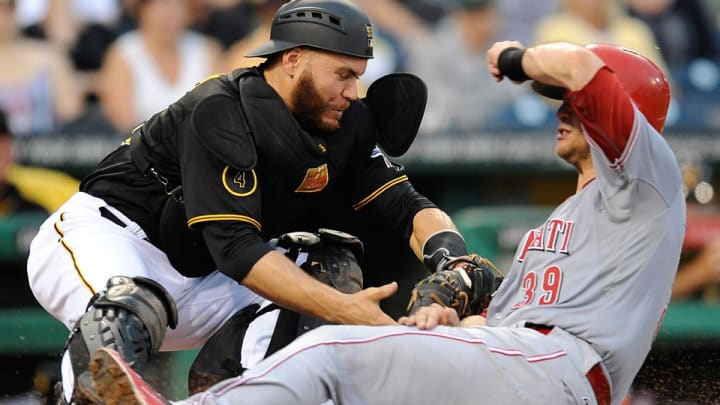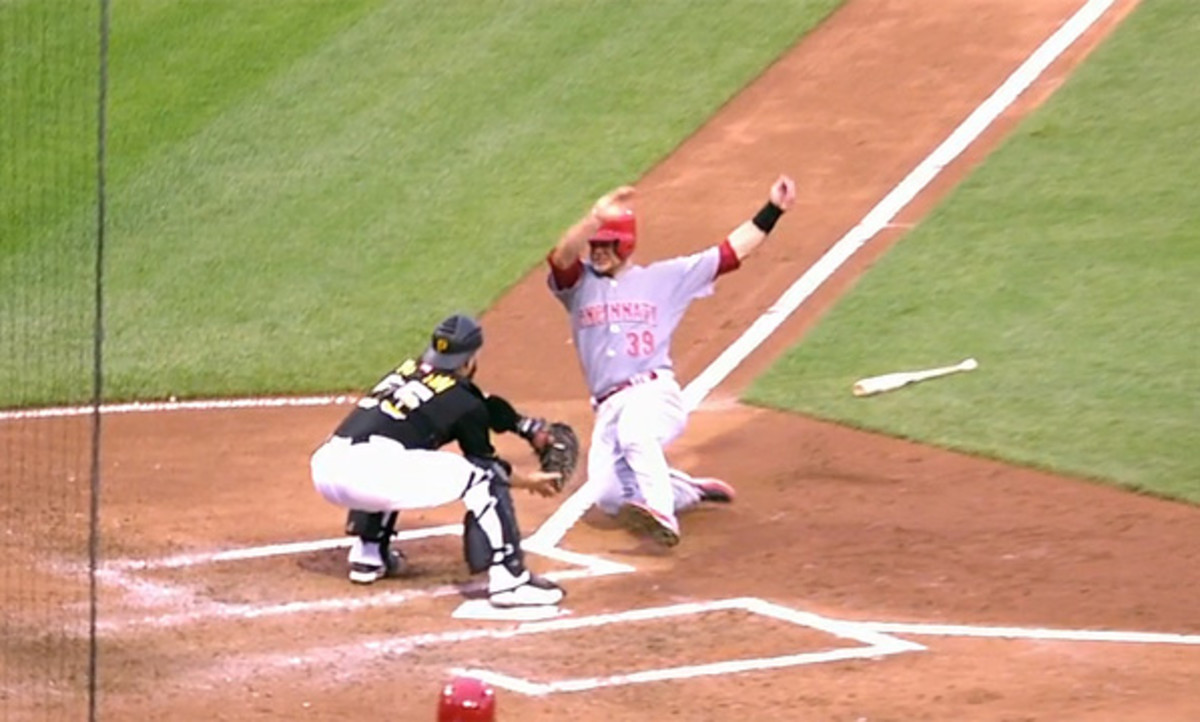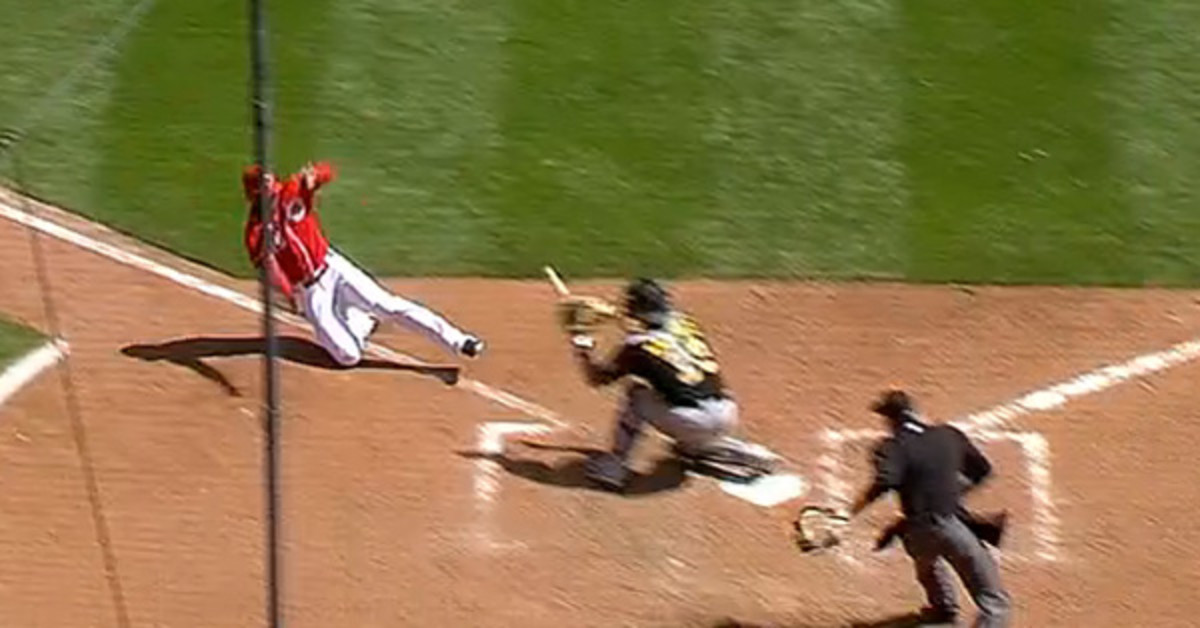MLB changes rule on home plate collisions, but will it help?

Major League Baseball’s new rule designed to prevent collisions at home plate -- Rule 7.13 -- is no longer applicable on force plays at home. That change was announced on Tuesday in a statement from Joe Torre, MLB’s executive vice president of baseball operations, and sent to the baseball operations departments of all 30 teams. That rule change is a direct result of a play at the plate in the Reds’ 11-4 win over the Pirates last Wednesday, in which Cincinnati catcher Devin Mesoraco was forced out only to have that call overturned on replay. The umpires ruled that Pittsburgh catcher Russell Martin had been blocking the plate, even though the ball beat Mesoraco to the plate by a couple of feet.
That replay decision made little sense even with Rule 7.13 still in effect on the play. As much confusion as there has been over the rule, all it really does is apply the well-established rules of obstruction and interference in effect at the other three bases to home plate. That is to say: A fielder cannot obstruct the runner’s path to the base if he is not in possession of or in the act of fielding the ball, and a runner cannot make an overt attempt to dislodge the ball once the fielder is in possession of it.
Given that, it’s difficult to understand what made the umpires overturn the call on Mesoraco given this screenshot of the moment at which Martin secured the ball in his glove:

In the above freezeframe, Martin is in possession of the ball well before any contact with Mesoraco. That’s an out any way you slice it according to the rules. Yet somehow, the umpires ruled that Martin illegally blocked the plate, even though even under Rule 7.13, it’s not illegal to block the plate if you have the ball.
Torre issued a statement about the play on Thursday expressing regret over the replay decision:
Last night's play at home plate was one of the most difficult calls that our umpires have faced this season, given that the positioning of the catcher at home plate was necessary to record the force out. After evaluating the play and the details of the review, we recognize that this play was not the type that should have resulted in a violation of Rule 7.13.
The issue apparently came down to the position of Martin’s right foot. In the screenshot above, Martin is falling toward foul territory, out of Mesoraco’s path. As he fell, he kept his right foot on the plate to be sure to get the force out. Torre’s statement the next day and the adjustment to Rule 7.13 both recognize the catcher’s need to have a foot on the plate in order to record a force out.
The decision to omit force plays from the application of Rule 7.13 also recognizes that force plays at the plate don’t lend themselves to collisions, as the catcher’s focus isn’t on tagging the runner but rather on simply catching the ball with a foot on the plate, much as a first baseman would. Similarly, the runner’s focus isn’t on dislodging the ball in a tag attempt, but simply beating the throw. Torre said as much in his statement:
Rule 7.13 was adopted in order to prevent unnecessary collisions at home plate between a runner attempting to score and a catcher attempting to make a tag play on the runner. The Rule as intended has no function or purpose in the context of a force play (i.e., a runner attempting to score from third with the bases loaded). As a result, effective immediately, Umpires will be instructed not to apply Rule 7.13 to force plays at home plate.
That said, I don’t believe the rule change was necessary, as proper interpretation of the rule would have allowed catchers to catch the ball with their foot on the plate for a force out with the runner being safe if he beat the ball to the plate, as he would be with or without the catcher’s foot in the way. If anything, omitting force plays would seem to be covering for the fact that the umpires as a group, including those working in the Replay Operations Center, continue to struggle with what is really a common-sense rule.
The real issue seems to be the timing of the play. Strict interpretation would say that if the catcher has control of the ball before making contact with the runner, he cannot be cited as having illegally blocked the plate. That was not how it was interpreted last Wednesday in Pittsburgh, however, or in Colorado in April. However, as I noted at the time, it was interpreted that way in a Pirates-Reds game in Cincinnati that same week. Look at this screenshot from that April 16 game:

Though Pittsburgh catcher Tony Sanchez has his entire body in front of the plate, Cincinnati's Roger Bernadina was called out on that play (which was not a force out), a decision properly upheld on replay because Sanchez had the ball before Bernadina reached the plate. Good luck to anyone trying to figure out how Sanchez was not blocking the plate in that play yet Russell Martin was blocking the plate last Wednesday despite the nearly identical timing of both plays (never mind the added element of the force out, which meant that Mesoraco was out the moment Martin caught the ball, before any contact between the two players).
The proper ruling is that since both catchers were in possession of the ball before making contact with the runner, neither was blocking the plate, yet somehow both plays were reviewed and only one of the two out-calls was upheld. Removing force plays from the jurisdiction of Rule 7.13 won’t solve that problem. The only thing that will is educating umpires as to the proper application of the rule.
